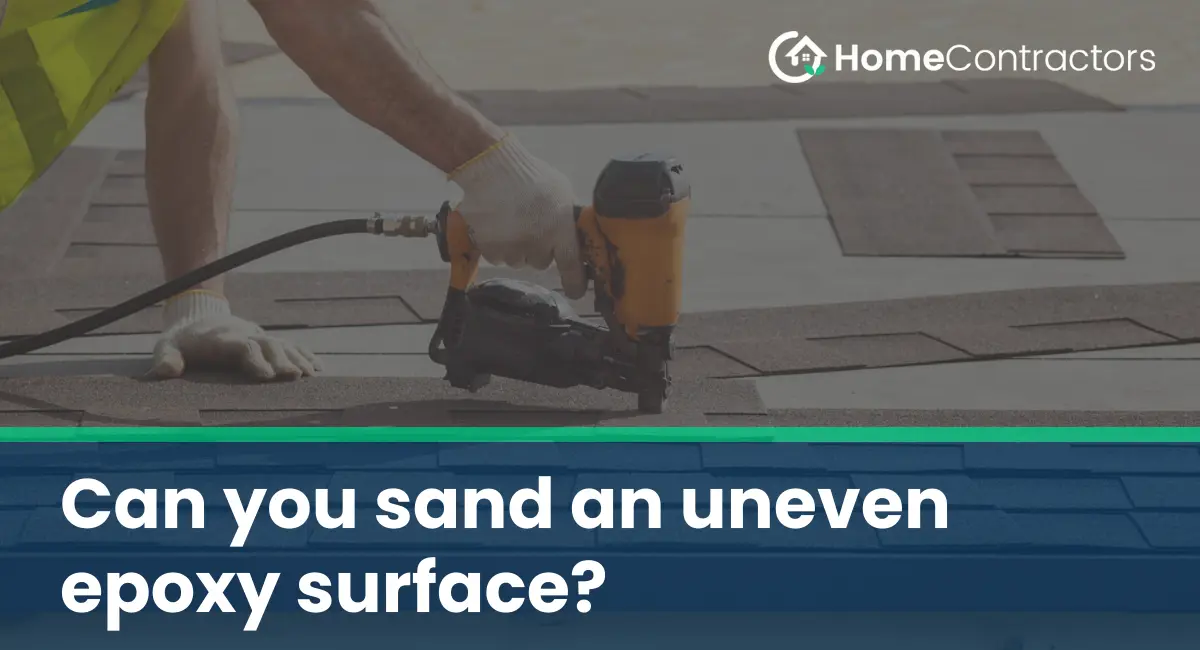Introduction: Understanding Epoxy Surfaces
Epoxy surfaces are a popular choice for a wide range of applications due to their excellent durability, resistance to chemicals, and high gloss finish. Whether you’ve applied epoxy to a floor, countertop, or other surfaces, achieving a smooth and even surface is essential for a professional and visually pleasing outcome. However, in some cases, you may end up with an uneven epoxy surface. In such situations, sanding can be a potential solution. This article delves into the process of sanding an uneven epoxy surface, discussing its feasibility, steps involved, and considerations to keep in mind.
Feasibility of Sanding an Uneven Epoxy Surface
When it comes to determining whether sanding is a viable option for an uneven epoxy surface, a few key factors should be considered. These factors include the type of epoxy, the extent of unevenness, and the overall condition of the surface. In general, it is possible to sand an epoxy surface to flatten it, provided certain conditions are met:
- Fresh Epoxy Application: Sanding is typically feasible if the epoxy surface is still relatively new and has not fully cured. It is crucial to consult the epoxy manufacturer’s guidelines to ensure that sanding is appropriate within the specific cure time frame.
- Thickness: If the epoxy coating is thick enough, sanding becomes more viable. This allows for the removal of a sufficient amount of material without compromising the integrity of the coating.
- Professional Advice: It is advisable to consult with professionals or epoxy experts regarding the specific epoxy system you are working with. They can provide insight into the material’s properties and advise whether sanding is a suitable option.
Steps to Sand an Uneven Epoxy Surface
Assuming that you have determined sanding to be a feasible solution for your uneven epoxy surface, here are the steps to follow:
- Prepare the Area: Ensure the workspace is well-ventilated and free from any debris or loose items. Protect adjacent surfaces, walls, and furniture with drop cloths or plastic sheets.
- Safety Measures: Wear appropriate protective gear, including safety goggles, a dust mask or respirator, and gloves. This will safeguard your health and prevent inhaling or coming into contact with any potentially harmful particles generated during the sanding process.
- Choose Sandpaper Grit: Start with a coarser grit sandpaper (around 80 to 120 grit) to remove the highest points of unevenness. Then, switch to finer grit sandpaper (around 220 to 400 grit) for a smoother finish.
- Sanding Technique: Use a handheld orbital sander or sanding block to sand the uneven areas. Apply even pressure and move the sander in a circular or sweeping motion, constantly inspecting the surface to ensure a level and even result. If you are working on a large area, it may be beneficial to use a floor buffer with a sanding pad for more efficient sanding.
- Clean and Assess: Periodically stop sanding to clean away any dust or debris. This will help you assess the progress and determine if additional sanding is required. After each cleaning, use a level or straight edge to check the surface for evenness.
- Finishing Touches: Once the desired level of smoothness is achieved, switch to the finest grit sandpaper to create a polished finish. Gently sand in a linear motion, working towards obtaining a glossy appearance that matches the surrounding epoxy surface.
Considerations When Sanding an Epoxy Surface
While sanding is a potential remedy for an uneven epoxy surface, it is essential to consider a few factors during the process:
- Depth: Carefully monitor the depth of the sanding process to avoid removing too much material, which may compromise the integrity of the epoxy coating.
- Heat Generation: Be cautious about the heat generated during sanding, as excessive heat can soften or damage the epoxy surface. Avoid applying excessive pressure or using high-speed sanders, as these may cause localized heating.
- Dust Management: Epoxy dust generated during sanding can be hazardous and may cause respiratory irritation. Therefore, use proper dust extraction systems or vacuum cleaners equipped with HEPA filters to minimize dust and ensure a safe working environment.
Sanding can be a feasible solution to achieve an even surface for an epoxy coating. However, it is crucial to consider the type of epoxy, the extent of unevenness, and follow appropriate sanding techniques. If you are unsure about the suitability of sanding for your specific epoxy system, consulting professionals or epoxy experts is highly recommended. By following the recommended steps and considering the necessary precautions, you can sand an uneven epoxy surface to achieve a smooth and professional finish.
